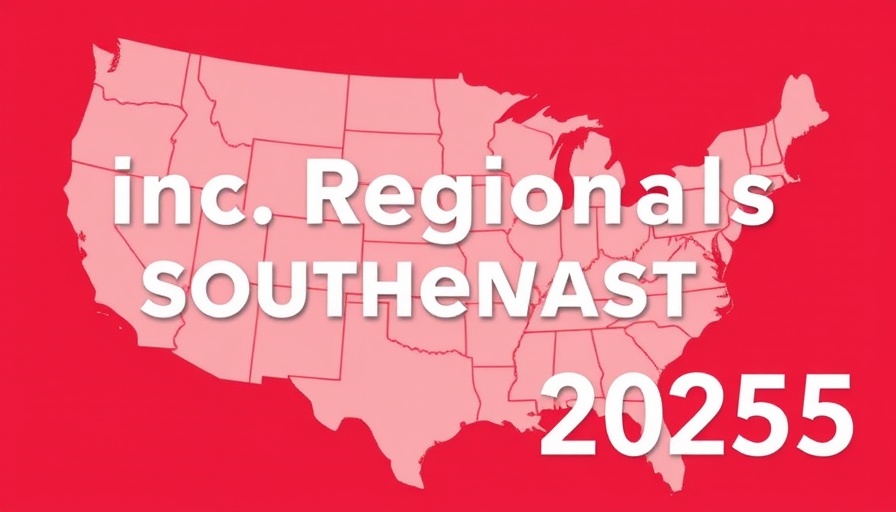
VRIZE: A Rising Star in the Digital Engineering Landscape
The announcement of VRIZE's ranking as No. 43 among the fastest-growing companies in the Southeast by Inc. magazine is not merely a corporate accolade; it symbolizes a significant shift within the tech industry, particularly in the sphere of digital engineering. Established in 2020, VRIZE has rapidly carved out its niche as a transformative force, with its workforce expanding to over 450 professionals. The company's resilience and innovative approach are essential traits for thriving amidst the complexities of today's economic landscape.
The Economic Insights Behind VRIZE's Growth
As highlighted in the report, the companies on the Inc. Regionals list collectively generated an impressive $8.1 billion and created 11,493 jobs. This financial boon underlines the vitality of the tech sector in driving economic recovery post-pandemic. VRIZE's growth trajectory is a microcosm of this trend, showcasing how tech-driven solutions can enhance operational efficiencies and foster significant employment opportunities across various sectors.
Digital Transformation: The New Frontier in Business
VRIZE's emphasis on delivering a "frictionless digital transformation" speaks volumes about contemporary business needs. Organizations now face mounting pressure to adapt quickly and efficiently to shifting market demands. The inclusion of advanced data analytics, AI, and supply chain transformation into VRIZE’s service offerings not only caters to large enterprises but also champions the capabilities of mid-sized firms eager to innovate without incurring a financial burden.
Testament to Leadership and Vision
The CEO of VRIZE, Maloy Roy, elucidated the importance of client trust and a dedicated workforce. His insights into the company's ethos emphasize a culture of resilience and innovation. He articulated, “It’s a testament to the impact of delivering digital transformation the right way—frictionless, purpose-driven, and built for scale.” Such leadership underscores a broader narrative—that successful enterprises are those that prioritize sustainable growth and adapt their strategies to meet changing societal needs.
Challenges and Opportunities Ahead
The recognition VRIZE has received is monumental; however, it also presents challenges, particularly in maintaining swift growth while navigating economic uncertainties. As companies worldwide grapple with inflation, supply chain issues, and rapidly changing customer expectations, ensuring staff retention and a positive workplace culture is crucial for VRIZE’s sustained success. Furthermore, establishing collaborative partnerships may enhance VRIZE's market position and drive collective innovation.
The Broader Context of Economic Growth in the Southeast
This accolade places VRIZE alongside other trailblazers within the Southeast—a region increasingly recognized for its dynamic economy. This recognition coincides with shifts in global business paradigms focusing on technology, sustainability, and social responsibility, revealing the importance of accountability in maintaining positive public relations.
What VRIZE's Success Means for the Future
VRIZE's ascent on the Inc. Regionals list presents a case study for other businesses in the digital engineering sector. As the landscape evolves, organizations can learn from VRIZE’s commitment to client-centric solutions and agile methodologies. This focus may well be the key to unlocking new avenues of growth and innovation.
Looking Ahead: A Call for Continued Innovation
For businesses keen on emulating VRIZE's success, the imperative is clear: invest in technologies that not only streamline operations but also embrace the possibilities of a digital-first future. As VRIZE demonstrates, a purposeful approach to digital transformation can reshape industries and redefine competitive advantages.
In conclusion, as VRIZE continues its upward trajectory, it serves as a beacon for aspiring companies in the tech landscape. The focus now must remain on innovation, accountability, and contributing positively to the socio-economic fabric of the regions they serve.
 Add Row
Add Row  Add
Add 




Write A Comment